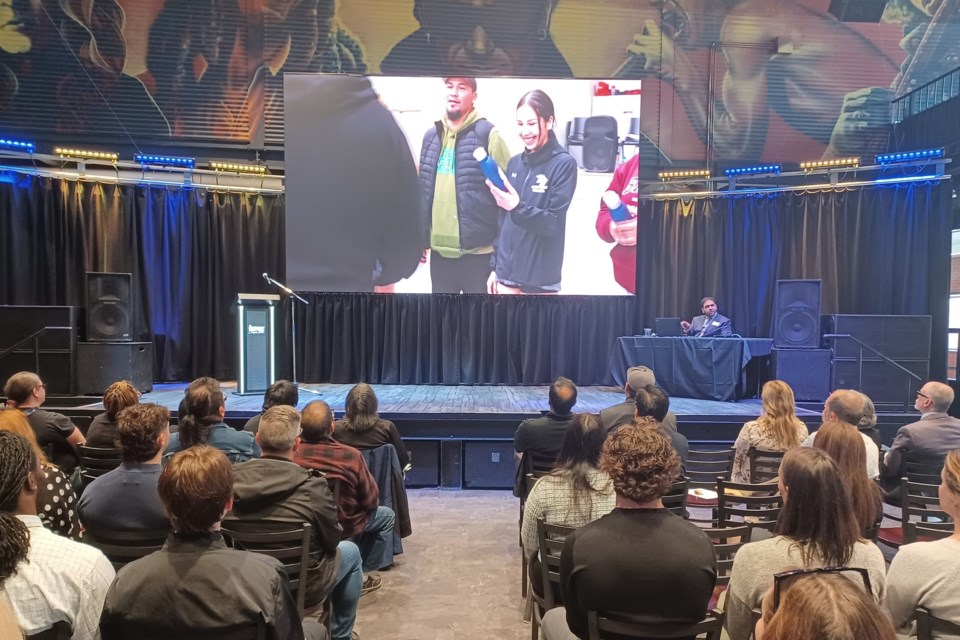GRASSY NARROWS – Lakehead University athletes came to this Treaty 3 community northeast of Kenora in March, met with local children and youth, and ran clinics in volleyball, soccer and hockey.
The athletes’ trip is captured in two documentaries that were screened Wednesday at the university’s Thunder Bay campus.
Meeting the LU athletes “was a very fun and interesting learning experience,” Grassy Narrows high schooler Lexx Paul said after the documentaries were screened at the university’s Outpost.
Jaydon Fobister, also from Grassy Narrows, said the athletes coming to his community “really meant a lot to me because, you know, I enjoy those sports – soccer, hockey, volleyball.”
Sharing the Game is a nine-minute documentary on the LU Soccer Club’s time in Grassy Narrows teaching kids and youths some of the finer points of the beautiful game.
Reach Up – Grassy Narrows is an eight-minute documentary about the LU volleyball and hockey team members teaching their sport in the Anishinaabe community.
Wednesday’s screening was hosted by the Lakehead University Student Union and Paapiiwaaniimaan Grassy Narrows Mercury Care Home.
A groundbreaking ceremony for the mercury care home, a specialized medical care facility for people with mercury poisoning, was held in early March.
Grassy Narrows was hit hard by mercury dumped into the English-Wabigoon River system by a pulp mill in the 1960s and ’70s.
The impacts of the mercury poisoning are still felt in Grassy Narrows, and researchers have found elevated mercury levels persist.
The facility “really means a lot” to Grassy Narrows, said Fobister. “It means that we’re going to be taking care of our elders in our own community.”
Construction will be completed in 2027, said Chief Sherry Ackabee.
“So that’s very good news to us, to the community, to our people,” she said.
“I’m looking forward to that day when we can bring our elders home, back into the community.
“I find that when they’re away from the community, they get lonely. And that’s what I don’t like to see, our people lonely.”
Some elders who are in care outside Grassy Narrows were brought to the reserve to see the groundbreaking ceremony, she said.
“And, you know, as soon as the doors opened on the handicapped van, it almost made me cry because I saw one of our community members who I haven’t seen for a long time. His name is Eric, and he was just happy to see familiar faces in Grassy.”
Once the mercury care home opens, she said, “they’ll be on home grounds. That’s going to make me very happy.
“That’s what we want to see: our people happy, comfortable, treated well and surrounded by family and friends.”
Ackabee had praise and gratitude for the visitors from Lakehead.
“It was really good that they came out to Grassy,” she said.
“It was nice to see the children happy doing sports with them. They kept the children busy, and for them to participate in sports was an awesome thing that the university came out to do.”
Ackabee said the children and youth of Asubpeeschoseewagong Netum Anishinabek, as the Grassy Narrows First Nation is also known, would gladly welcome another visit by LU athletes.
“And it kind of brought a little bit of tears to my eyes when I was watching the video, seeing how happy the children are. Watching them play sports was awesome.”
Planning is in the works for more LU athlete visits to Grassy Narrows, said Hussain Durrani, the mercury care home’s director of talent and organizational development.
